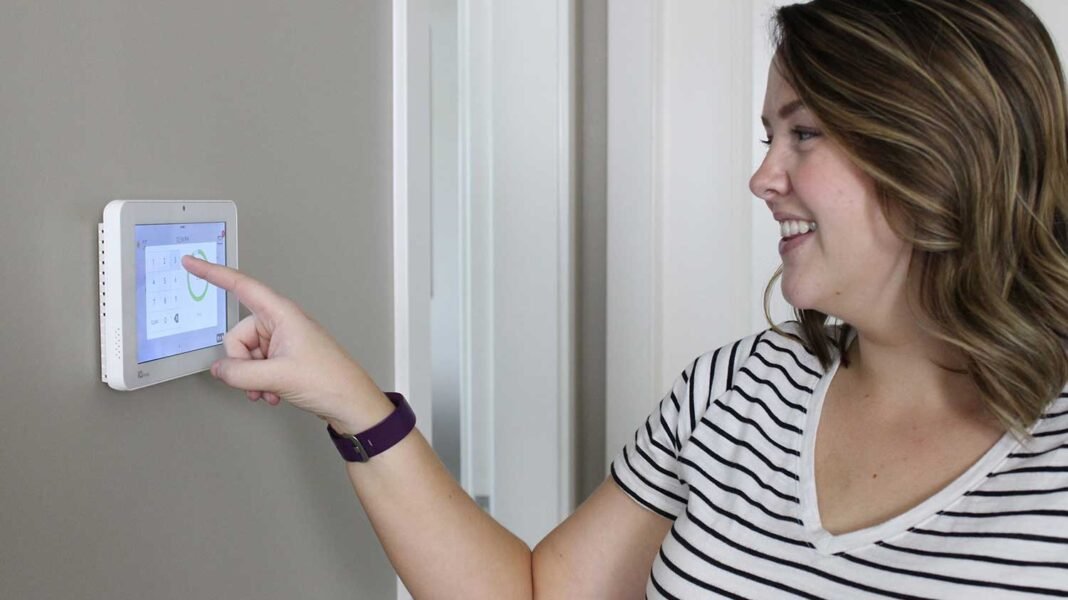In today’s rapidly advancing technological landscape, our homes are becoming smarter and more connected than ever before. One area where this innovation is particularly evident is in home security. Traditional locks are being replaced by sophisticated smart lock systems that offer enhanced convenience, flexibility, and security. In this article, we will delve into the world of smart locks, exploring their features and best practices for maximizing their effectiveness in bolstering home security.
Understanding Smart Locks
What Are Smart Locks?
Smart locks are electronic locking systems that provide keyless entry to your home. Unlike traditional locks, which rely on physical keys, smart locks utilize various technologies such as Bluetooth, Wi-Fi, or Zigbee to enable remote access and control. With the help of a smartphone app or a designated access code, homeowners can lock and unlock their doors from anywhere, providing convenience and peace of mind.
Key Features of Smart Locks
- Remote Access: One of the primary features of smart locks is their ability to be controlled remotely. Whether you’re at work, running errands, or on vacation halfway around the world, you can easily monitor and manage your home’s security from the palm of your hand using your smartphone.
- Keyless Entry: Say goodbye to the hassle of carrying around bulky keychains or worrying about lost keys. Smart locks offer keyless entry, allowing you to enter your home using a unique access code, biometric identifiers such as fingerprints or facial recognition, or even proximity sensors that detect your smartphone’s presence.
- Activity Monitoring: Many smart locks come equipped with activity logs that allow you to keep track of who enters and exits your home and when. This feature provides valuable insights into household activity and can help identify any unusual or suspicious behavior.
- Integration with Smart Home Systems: Smart locks seamlessly integrate with other smart home devices, such as security cameras, doorbell cameras, and smart lighting systems. This integration allows for a holistic approach to home security, with all devices working together to keep your home safe and secure.
Best Practices for Using Smart Locks
Choose a Reputable Brand
When selecting a smart lock for your home, opt for a reputable brand with a track record of reliability and security. Research different brands, read reviews from other users, and consider factors such as encryption standards and compatibility with your existing smart home ecosystem.
Ensure Secure Installation
Proper installation is essential to the effectiveness of a smart lock. Follow the manufacturer’s instructions carefully, and if you’re unsure, consider hiring a professional locksmith or technician to install the lock for you. Ensure that the lock is securely attached to your door and that all connections are properly configured.
Regularly Update Firmware
Just like any other connected device, smart locks require regular firmware updates to patch vulnerabilities and ensure optimal performance. Enable automatic updates whenever possible, and periodically check for firmware updates through the manufacturer’s app or website.
Protect Access Credentials
If your smart lock uses access codes for entry, choose unique and secure codes that are difficult to guess. Avoid using easily identifiable codes such as birthdays or addresses, and regularly update your codes to minimize the risk of unauthorized access. Additionally, refrain from sharing access codes with individuals you do not trust implicitly.
Implement Additional Security Measures
While smart locks offer significant benefits, they should not be relied upon as the sole means of securing your home. Consider implementing additional security measures such as security cameras, motion sensors, and traditional deadbolt locks to create multiple layers of protection.
Test and Troubleshoot Regularly
Periodically test your smart lock to ensure that it is functioning correctly. Test both remote and manual entry methods, and address any issues promptly. If you encounter connectivity problems or malfunctions, troubleshoot the problem by checking your Wi-Fi or Bluetooth connection, replacing batteries, or contacting customer support for assistance.
Conclusion
Smart locks represent a significant advancement in home security technology, offering homeowners a convenient and effective way to enhance their home’s security. With features such as remote access, keyless entry, and activity monitoring, smart locks provide peace of mind and greater control over home access. By following best practices for installation, maintenance, and usage, homeowners can maximize the benefits of smart locks and enjoy a safer and more secure living environment.


